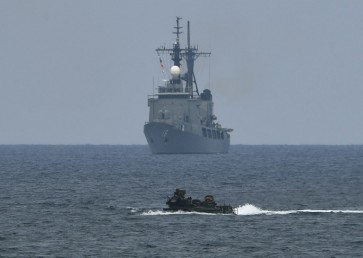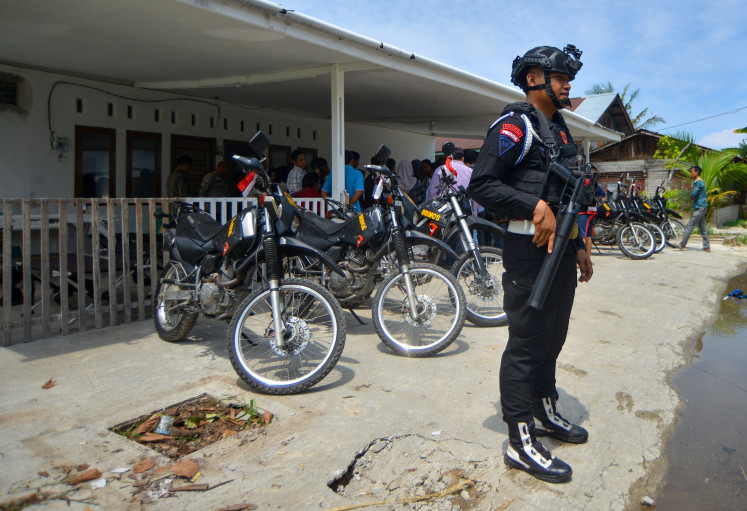Popular Reads
Top Results
Can't find what you're looking for?
View all search resultsPopular Reads
Top Results
Can't find what you're looking for?
View all search resultsInvestment outside Java steadily increases
The realization of both domestic and foreign investments outside Java has increased significantly despite various problems, ranging from poor infrastructure and land disputes to overlapping regulations
Change text size
Gift Premium Articles
to Anyone
T
he realization of both domestic and foreign investments outside Java has increased significantly despite various problems, ranging from poor infrastructure and land disputes to overlapping regulations.
Trade Minister Gita Wirjawan, who is also chairman of Indonesia’s Investment Coordinating Board (BKPM), said at a two-day regional investment seminar that ended on Friday in Padang, West Sumatra, that the investment realization outside Java in the first quarter of this year reached Rp 33.6 trillion (US$3.59 billion), or 47 percent of the total investment realization.
In comparison, the realization for the same period last year accounted for about 42 percent of total investment, he said.
“It means the effort of distributing investments across Indonesia through certain regulations has shown positive results. This effort will continue to rise in line with the acceleration of infrastructure development, including electricity and gas supplies,” Gita said.
Gita explained that the total investment realization in the first quarter of 2012 was Rp 71.2 trillion, consisting of Rp 19.7 trillion in domestic investment projects and Rp 51.5 trillion under the foreign investment scheme. The figure increased by 32 percent compared to the same period in 2011, he said.
The minister added that the ideal equilibrium for the distribution of investment in regions should reach 55 to 60 percent. “This kind of figure is needed to help support the spirit of the unitary state of the Republic of Indonesia,” he said.
With regard to the various obstacles that frequently hinder regional investment, businessmen taking part in the seminar, including Investment Council member Peter F. Gontha, and member of the Indonesian Chamber of Commerce and Industry (Kadin), Zamharir A Radhi, underlined the importance of the government demonstrating its commitment to thoroughly resolve all the issues.
Such a commitment was sorely needed, they said, as it would be hard to achieve an equitable distribution of investment across Indonesia if such widespread problems, which can lead to social unrest such as the recent Mesuji incident in Lampung, were not solved.
Southeast Sulawesi Governor Nur Alam, one of the speakers at the seminar, highlighted the significant potential in his province and how easy it was to do business there. “The most important thing is there must be firmness in handling any problem. And to settle overlaps in the many bylaws, there must also be integration between all relevant parties,” he said.
Nur Alam admitted that despite the many initiatives to improve the investment climate in Southeast Sulawesi, there was often poor coordination among local institutions. “One institution, for example, issued a bylaw that frequently overlapped with other bylaws issued earlier by other institutions,” he said.
Responding to Nur Alam’s remarks, however, Zamharir, who also belongs to Kadin’s Russian and CIS committee, expressed his concern over the poor response from the Southeast Sulawesi provincial administration when he brought a group of Ukrainian businessmen to the province with the intention of investing in the cacao processing industry in Kendari.
“A group of Ukrainian businessmen flew to Southeast Sulawesi with the aim of establishing a cacao processing factory there. But their visit ended in disarray due to the poor infrastructure, despite the large amount of cacao in the province,” Zamharir said.
The seminar, which was also attended by scores of foreign businessmen, the majority of whom were from India, was integrated with an exhibition promoting investment opportunities across Indonesia’s 33 provinces.










